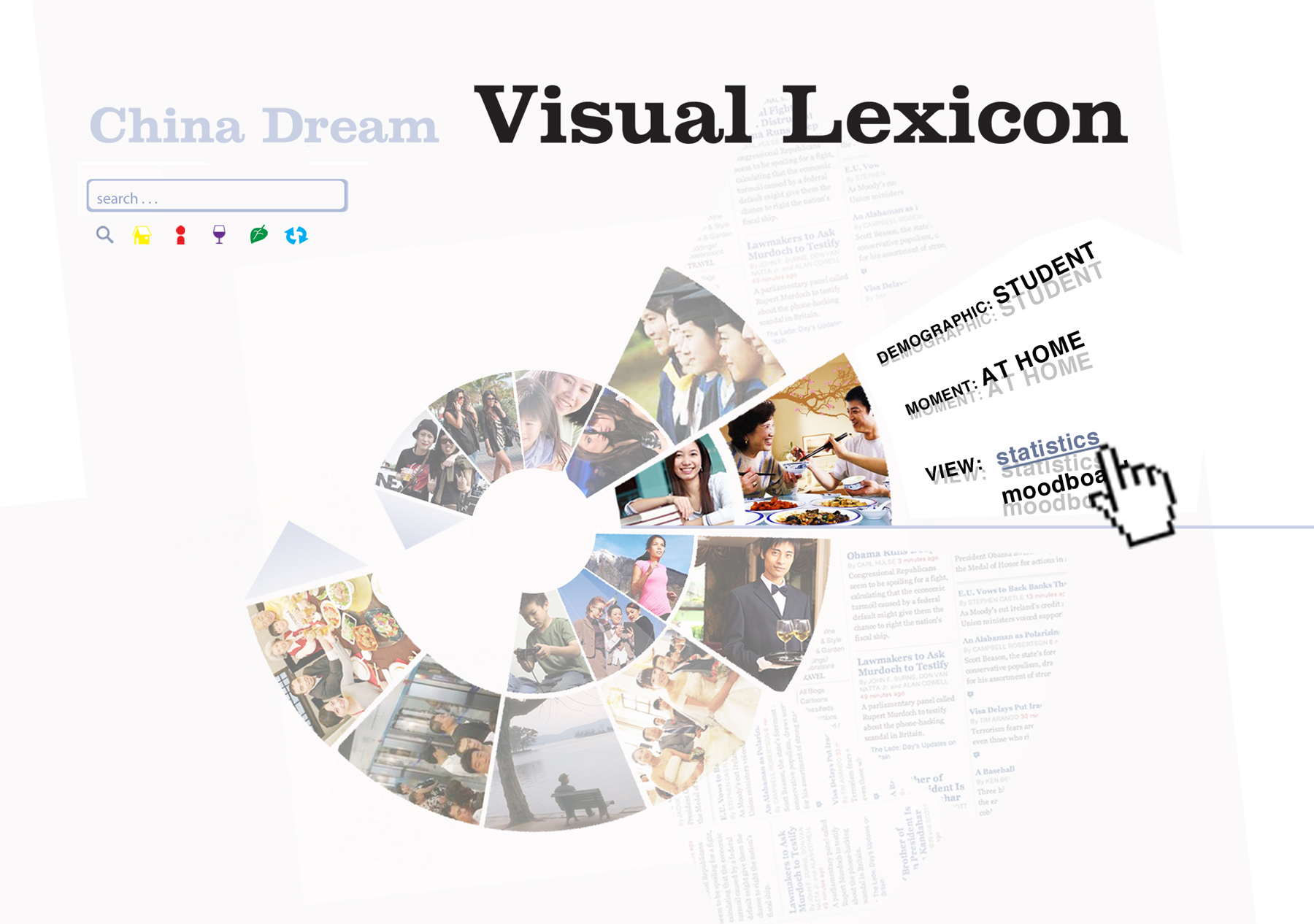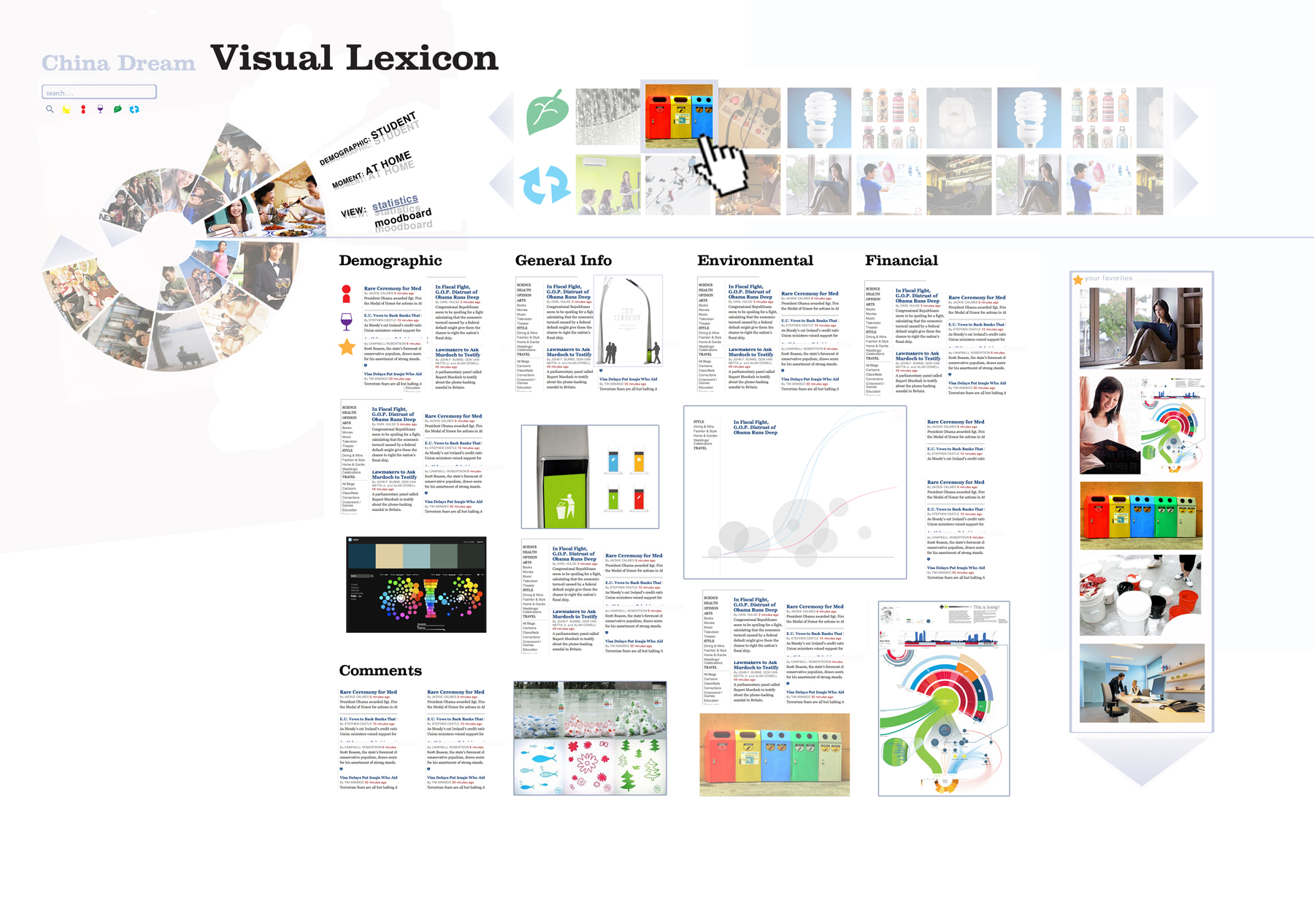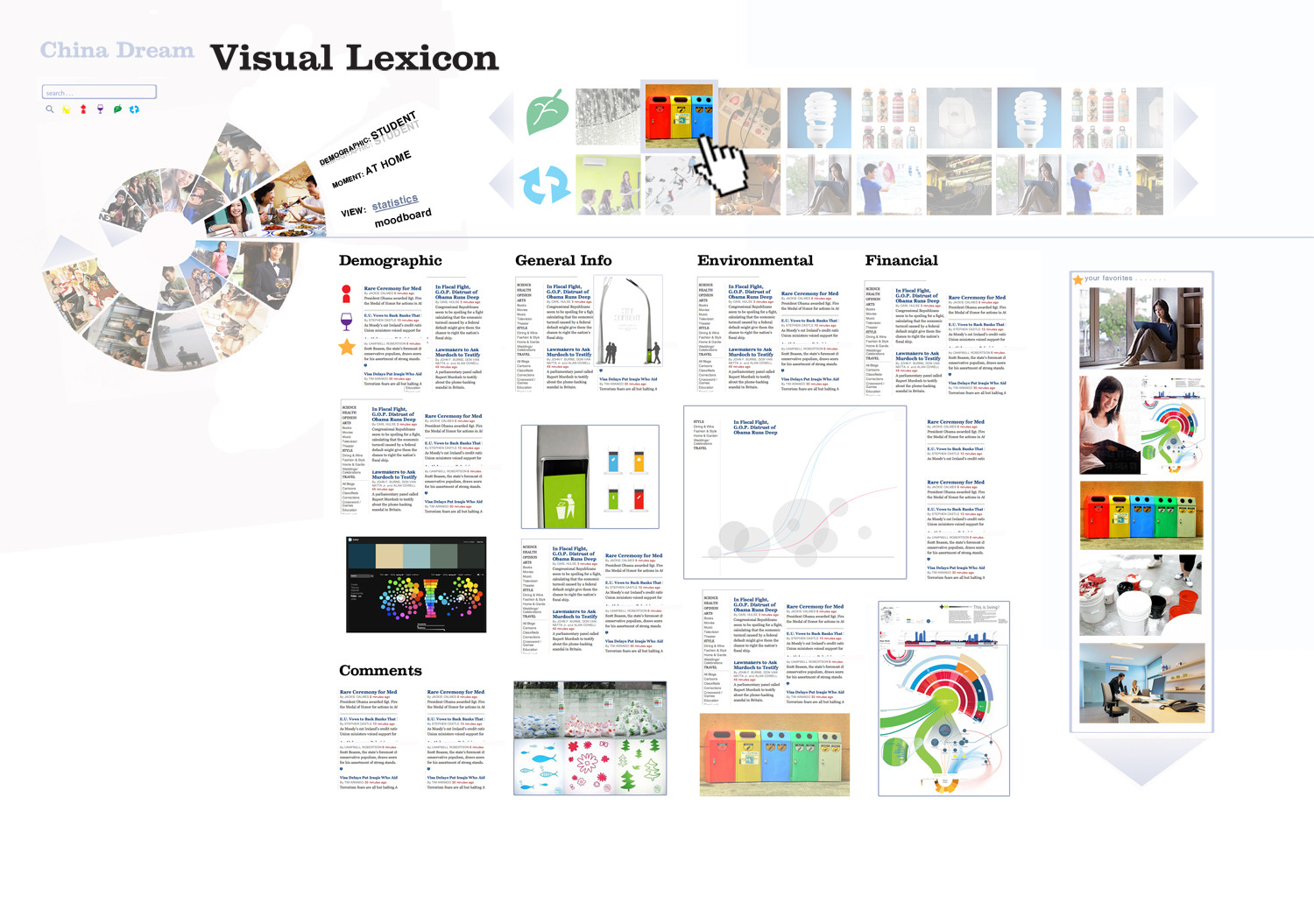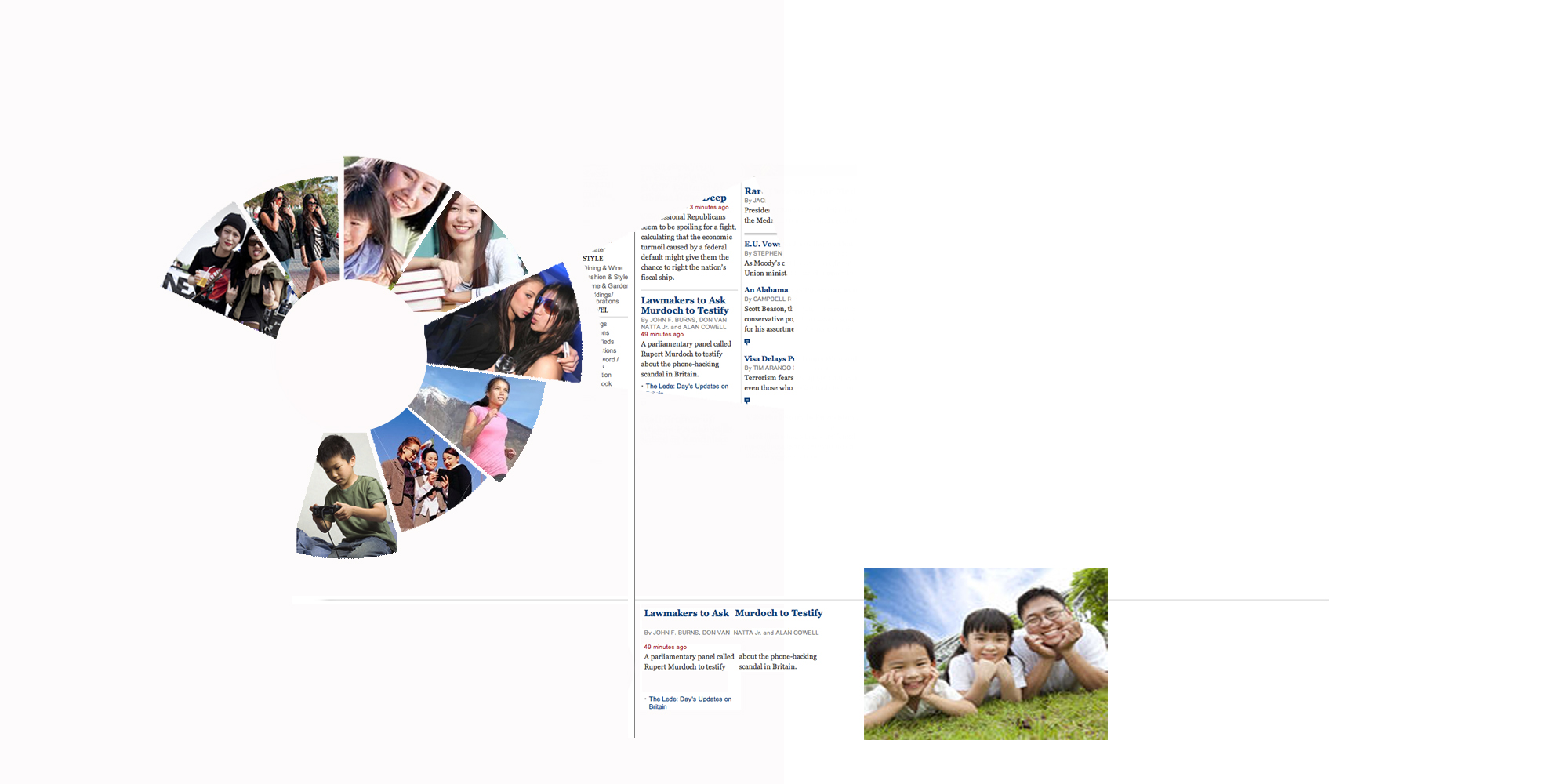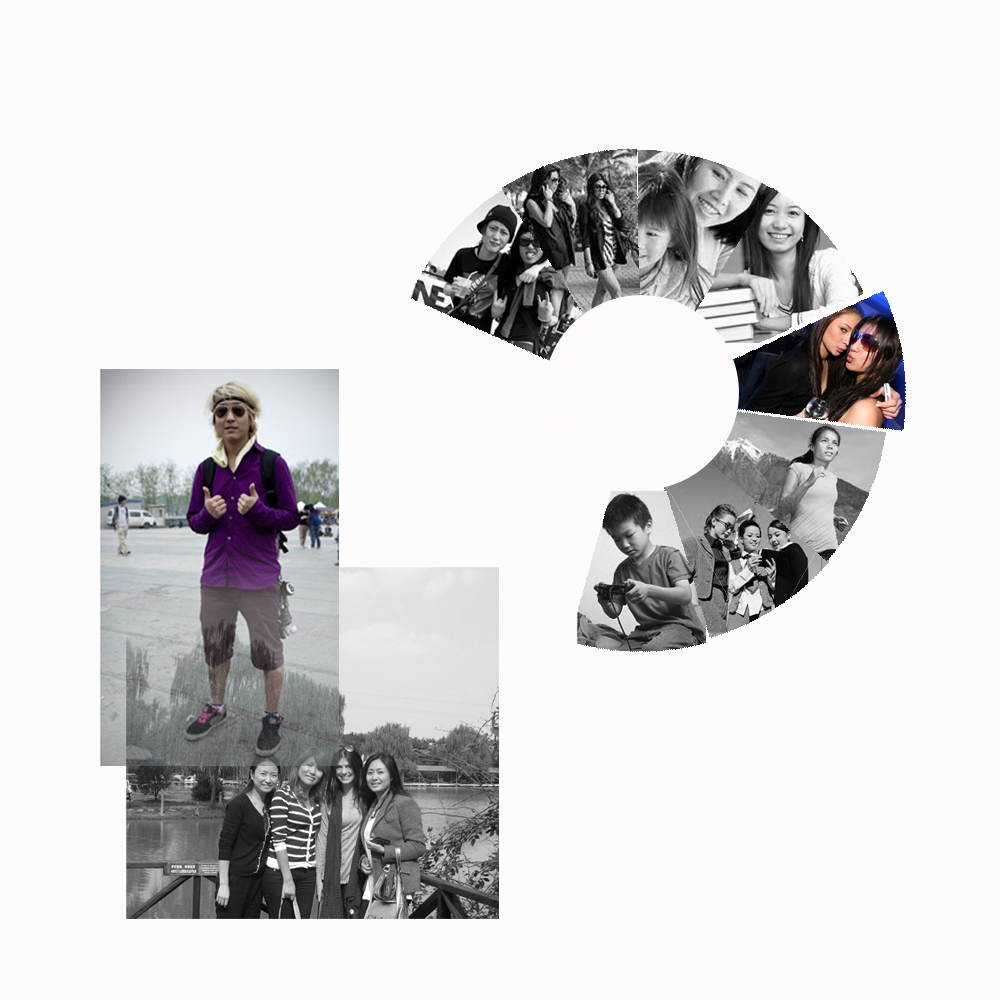
I spent the summer of 2011 in Shanghai, where I worked on the "China Dream Project", a flagship collaborative media project headed by JUCCCE: Joint US-China Collaboration for Clean Energy. The dream project seeks to redefine the aspirational lifestyle in Chinese media and advertisement. Through a multi faceted media approach, the project brings together leading figures in music, literature, pop culture, television, and advertisement, to redefine what it means to be successful while aspiring to "green" values. I was the lead designer, which included visual and communication design.
One of their biggest challenges was communicating this very big and sometimes vague idea. They wanted to create a visual communication tool.
My challenge was to work with their mission and the Shanghainese media context. I had a hard time imagining influencing advertising professionals on the images they chose without creating an extremely useful imaging and inspiration tool that would surpass our intention of influence in its usefulness and usability. My second challenge was to work with the criteria set by my boss: to use a hofstede wheel with specific categories for the main navigation.
To this end, I wireframed and designed the online application, aimed at Shanghai's advertising professionals and business owners. More specifically, the users of the application are participants in the project or aspiring participants looking to incorporate JUCCCE-approved green imagery into their products. It is a moodboarding/brainstorming tool that allows the user to create moodboards composed of online images and export them as layers into the adobe suite. While incorporating standard image search engines like google and flickr, the tool promotes images selected by JUCCCE and allows JUCCCE to communicate scenarios, text, and imagery that they want to promote as part of this partnership.
I incorporated google image search and flickr search results, as a way of broadening the scope and making the tool more functional, and therefore more useful toward their goal. I recommended the functionality of exporting to layers in the adobe suite as a way of addressing the usefulness quotient I mentioned before. I designed under the assumption that only by making something extremely useful to them, could JUCCCE's goal of influencing the image makers be attainable.
